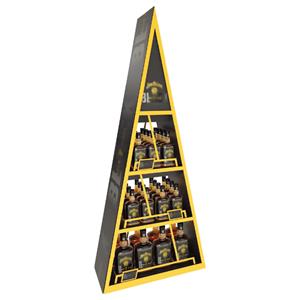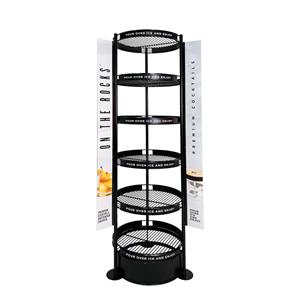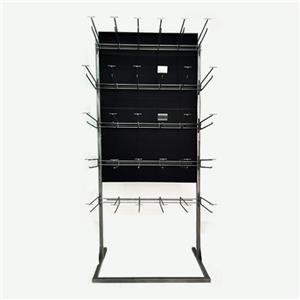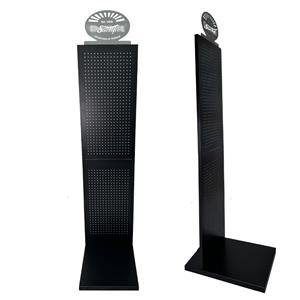How to display frozen food?
How to display frozen food?
Table of contents
1)Introduction
2)Fundamental Layout Principles for Frozen Food Displays
3)Creating a High-Efficiency Shelf Strategy
4)The Hidden Impact of Foot Traffic Design
5)Recommended Display Rack Types for Frozen Sections
6)Frequently Asked Questions (FAQ)
7)Conclusion
In today’s retail landscape, optimizing frozen food displays and improving Supermarket shelf organization are critical for both customer experience and sales performance. This article explores practical strategies for cold storage shelving layout, category zoning, and foot traffic flow, helping supermarkets create more efficient and visually appealing frozen food sections.
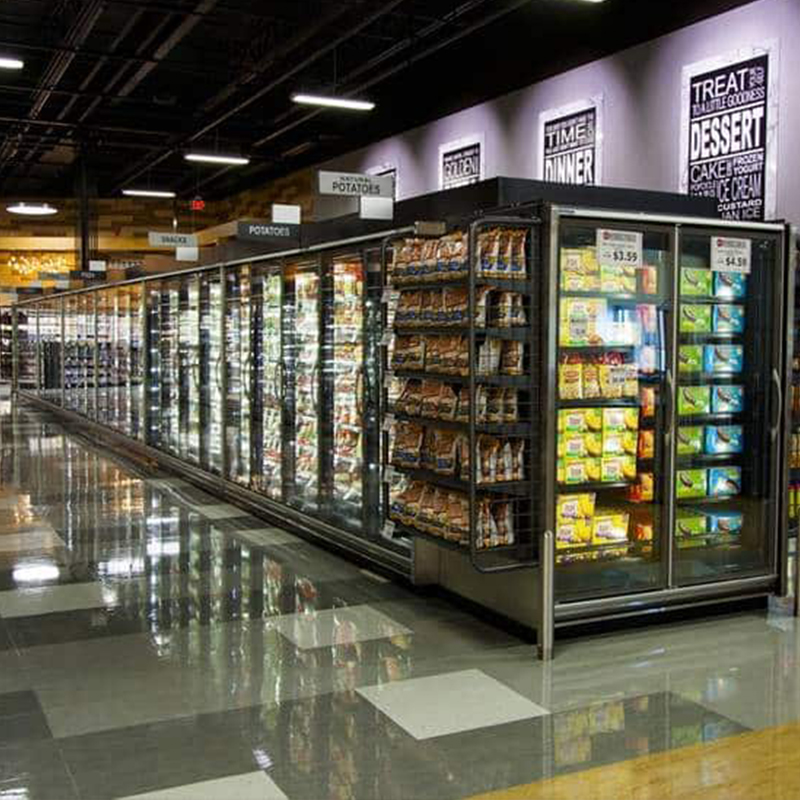
1. Fundamental Layout Principles for Frozen Food Displays
Frozen sections are often the most challenging areas to manage in a supermarket. Since products need to remain at low temperatures while staying accessible to shoppers, effective Frozen food displays must balance visibility with insulation. Upright glass-door freezers are highly recommended, as they reduce energy use while keeping products neat and easy to view.
Clear zoning is essential in frozen sections. Group items like dumplings, seafood, ice cream, and semi-prepared meals into distinct categories. Each zone should have clear signage so shoppers can find what they need quickly. Frozen food displays shelving height should account for customer reach and line of sight, avoiding hard-to-reach or hard-to-see placements.
2. Creating a High-Efficiency Shelf Strategy
Supermarket shelving isn’t just about stacking products—it’s about guiding shopper behavior. Smart Supermarket shelf organization helps extend browsing time and increase average purchase value. Frozen section shelves should align with the natural walking direction of customers. Avoid placing crowded freezer units near store entrances. Instead, create a welcoming and open layout.
Use the "golden shelf area" concept to position high-margin frozen items at eye level—typically between 90–150 cm from the ground. Popular, fast-moving items can go on the lower or upper shelves. For easy restocking, sliding drawer-style shelving is a great solution.

3. The Hidden Impact of Foot Traffic Design
Shoppers generally spend less time in the frozen section, so your Frozen food displays must guide attention efficiently. Well-planned layouts, like U-shaped or snake-patterned aisles, encourage full-section browsing rather than a quick in-and-out visit.
Directional signage and backlit advertisements can also increase engagement with new or promoted products. Keep aisle width at 1.2 meters or more to allow easy movement, even with carts. These thoughtful adjustments all fall under effective Supermarket shelf organization, helping improve the shopper experience without major renovation costs.
4. Recommended Display Rack Types for Frozen Sections
Given the specific needs of frozen food, these display rack types are most suitable:
Upright glass-door freezers – For clear visibility and energy efficiency.
Gravity-fed shelves with rear loading – For fast restocking from the back.
Magnetic changeable signage panels – For clear labeling and easy updates.
Modular stack racks – Ideal for seasonal products or temporary promotions.
Choosing the right Frozen food displays not only helps improve customer satisfaction, but also makes daily operations smoother for store staff.
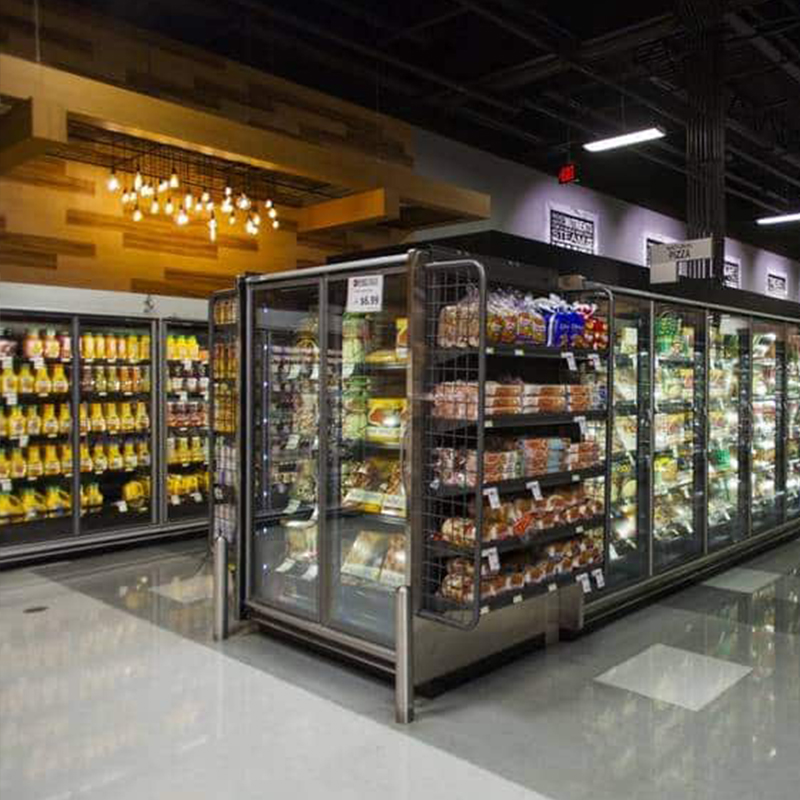
5. Frequently Asked Questions (FAQ)
Q1: Do frozen food displays sections need their own aisle?
A1: Not necessarily, but separating the area with a clear flow helps reduce temperature loss and keeps shoppers focused.
Q2: Where should Supermarket shelf organization ideally be located?
A2: Near the store perimeter or exits, away from entrances, to avoid blocking sightlines and foot traffic.
Q3: How can I keep frozen food displays clean and tidy?
A3: Use easy-to-clean materials like stainless steel or coated aluminum, and schedule regular cleaning routines.
Q4: Does unclear product categorization affect sales?
A4: Yes. Poorly organized products confuse customers and reduce their willingness to browse, which lowers conversion.
Q5: Are the keywords “Frozen food displays” and “Supermarket shelf organization” directly relevant to store planning?
A5: Absolutely. These terms reflect real-world practices that impact product visibility, sales flow, and overall store layout.
Sintop Value
At Sintop, we engineer frozen food displays racks and Supermarket shelf organization that balance energy efficiency with shopper convenience. From upright glass-door freezers to modular shelf systems, our supermarket shelf solutions are tailored to optimize visibility, category zoning, and restocking ease. With custom heights, back-loading features, and magnetic signage panels, Sintop racks transform your frozen food aisle into a well-ordered, profitable space.

Contact information
Website: www.sintopfixtures.com
Wechat/WhatsApp: +86 15980885084
Email: elly@xm-sintop.com
FAQ
1. What are store fixtures?
Store fixtures are essential equipment and furniture used in retail spaces to display, organize, and store merchandise. Examples include shelving units, racks, display cases, counters, and hooks.
2. Why are store fixtures important?
Store fixtures enhance the shopping experience by organizing products, improving accessibility, maximizing space, and creating appealing displays that attract customers and boost sales.
3. What types of store fixtures are commonly used?
Common types of store fixtures include:
Shelving Units(wall shelves, free-standing shelves, adjustable shelving)
Display Cases (glass cases, countertop cases)
Racks (clothing racks, display racks)
Counters (checkout counters, service counters)
Hooks and Pegboards
End Caps
Signage and Graphics
Mannequins
4. How do I choose the right store fixtures for my retail space?
Consider your merchandise type, store layout, and branding needs. Fixtures should be functional, complement your store's design, and fit within your budget. Evaluate your space to determine the best fixture types and configurations for optimal product presentation and customer flow.
5. Can store fixtures be customized?
Yes, many store fixtures can be customized to align with your store's branding and specific needs. Customization options include materials, colors, sizes, and designs. Collaborating with a fixture supplier or designer can help create fixtures that match your store’s style and functional requirements.
6. How can I maximize space with store fixtures?
Utilize fixtures that optimize vertical space, such as wall-mounted shelves and tall display racks. Modular and adjustable fixtures can adapt to changing merchandise or store layouts. Plan your store layout carefully to ensure efficient use of space and smooth customer flow.
7. How do I maintain store fixtures?
Regularly clean and inspect fixtures to ensure they remain in good condition. Check for wear and tear, and repair or replace damaged parts. Follow manufacturer guidelines for maintenance and cleaning to extend the lifespan of your fixtures.
8. Can store fixtures be used for different types of retail stores?
Yes, store fixtures can be adapted for various retail environments, including clothing stores, electronics shops, grocery stores, and more. The choice of fixtures depends on the specific needs and merchandise of the store.
9. How can store fixtures improve the customer experience?
Well-designed fixtures make products easy to find and browse, enhancing the overall shopping experience. Effective use of fixtures creates an organized, aesthetically pleasing environment that encourages customers to spend more time in the store.
10. Where can I purchase store fixtures?
Store fixtures can be purchased from specialized fixture suppliers, retail equipment stores, or custom fixture manufacturers. Online retailers and local suppliers also offer a wide range of options.

